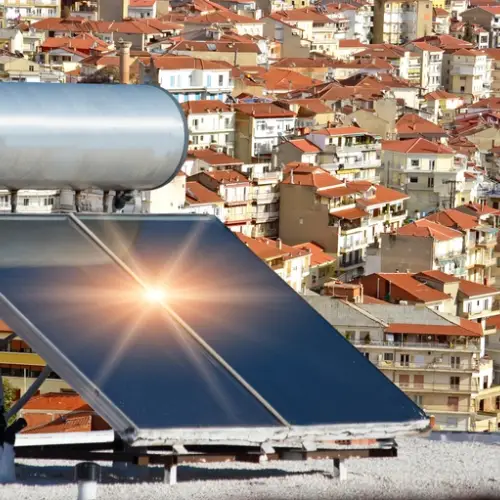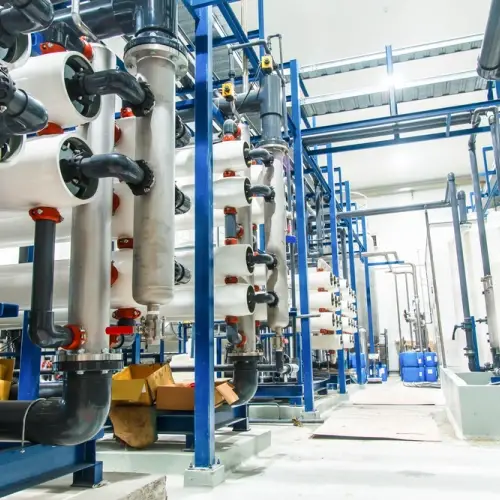
In the race to combat climate change and transition to a sustainable energy future, solar thermal energy stands out as a versatile and renewable powerhouse. By harnessing the sun’s abundant energy to generate heat, this technology offers innovative solutions for a wide range of applications—from heating homes and swimming pools to powering industrial processes and even generating electricity.
Unlike traditional fossil fuel-based systems, solar thermal energy reduces greenhouse gas emissions, lowers energy costs, and contributes to energy independence. Its ability to directly convert sunlight into heat makes it one of the most efficient and environmentally friendly energy solutions available today.
As governments and industries seek to meet ambitious global climate goals, solar thermal technology is paving the way for a cleaner, greener future. Whether applied in residential, commercial, or industrial contexts, its potential to revolutionize energy use is undeniable.
Direct solar thermal applications use the sun's energy to produce heat directly, like in swimming pool heating or solar water heaters. Indirect applications involve converting solar energy into another form, such as generating electricity via concentrated solar power (CSP) plants.
To better understand the versatility of solar thermal energy, let’s explore some examples of both direct and indirect applications.
1. Electricity generation
Concentrated solar power (CSP) plants are a type of thermal power plant that generates electricity. These systems use mirrors or lenses (like parabolic troughs or solar towers) to concentrate sunlight, producing high temperatures to generate steam. This steam drives turbines connected to electrical generators, converting solar radiation into thermal energy, then into mechanical energy, and finally into electricity.
To have a sufficiently large temperature, they use many solar concentrators such as parabolic troughs and solar furnaces. The solar radiation is concentrated on a power tower where the thermal energy generates steam.
CSP serves as an alternative to photovoltaic (PV) solar panels, offering a renewable way to produce power at scale. Therefore, it si an example of solar indirect solar thermal application.
2. Swimming Pool Heating
 Heating water to levels below boiling allows the use of black collectors for thermal absorption of solar radiation. It would be a clear example of a solar direct thermal application.
Heating water to levels below boiling allows the use of black collectors for thermal absorption of solar radiation. It would be a clear example of a solar direct thermal application.
Heating a swimming pool can consume a big amount of energy. Plus, in some countries, it is not allowed to warm using non-renewable energies. Energy-efficient pool heaters can improve your swimming pool's heating and energy efficiency.
3. Solar Underfloor Heating
Solar Underfloor Heating is a kind of solar heating. It consists of an electrical resistance glued to a mesh placed under the tiles or other pavement types on the floor.
Solar thermal systems can provide power underfloor heating by heating water.
An advantage of this system is that the fluid must not have such a high temperature by distributing the temperature more uniformly. This feature makes solar thermal energy an almost perfect technology for heating that water.
The system for heating the heating circuit is the same as in the case of domestic hot water. The same solar collectors installed outside the house allow us to obtain the maximum use of energy.
Solar panels convert solar energy into thermal energy, which can be heat transfer fluid. Transfer fluid circulates through the heating circuit. It will allow saving energy and reducing your electrical bills using solar thermal power.
If the solar system cannot provide adequate space heating, an auxiliary or back-up system provides the additional heat.
4. Production of Domestic Hot Water (DHW)
 Domestic hot water (DHW) is the water that we use at home. For this proposal, we do not need this water to be excessively hot. Thus, we can use flat plate collectors that can be quickly heated on the roof and heat exchangers. Due to their shape, glass tubes can better resist the ambient air pressure.
Domestic hot water (DHW) is the water that we use at home. For this proposal, we do not need this water to be excessively hot. Thus, we can use flat plate collectors that can be quickly heated on the roof and heat exchangers. Due to their shape, glass tubes can better resist the ambient air pressure.
The time to heat a liter of water is longer than the time it takes to consume. Thus, we cannot heat at the same time it is needed. To solve this problem, we can use energy storage systems.
In small houses, it is pervasive to see solar collectors. The function of these solar panels is to heat sanitary hot water for domestic use or heating. They are generally support systems, but they allow considerable financial savings.
What is a solar collector?
A solar collector is an exchanger that converts direct and diffuse sunlight into heat.
The heated water in the pipes is pumped, and the heat from it is stored in an insulated storage vessel: the boiler.
When the pipes’ temperature is higher than in the boiler, a control unit turns on the pump.
As a result, the solar collector is cooled by the boiler’s cold water. And then, the boiler is heated by the hot water from the solar collectors. After some time, when the solar collector and the water heater have almost the same temperature, the control unit switches off the pump.
5. Solar thermal energy for cooling, refrigeration, and air conditioning
Getting cold from heat is a paradox, but it is possible thanks to the absorption cooling technique.
The technology used in these systems, absorption cooling, is based on absorbing heat from specific pairs of substances. Its operation is based on the physical-chemical reactions between a refrigerant and an absorbent. It is activated by thermal energy -which in the case of solar energy is hot water.
The operation of any absorption refrigeration machine is based on three elementary physical phenomena:
-
When a fluid evaporates, it absorbs heat, and when it condenses, it gives up heat.
-
The boiling temperature of a liquid varies as a function of pressure; as the pressure drops, the boiling temperature drops.
-
There are pairs of chemicals that have a particular affinity when it comes to dissolving each other.
6. Solar energy in powering agriculture
 For agricultural production and processing, solar energy is a crucial energy source, particularly drying, heating, and cooling.
For agricultural production and processing, solar energy is a crucial energy source, particularly drying, heating, and cooling.
Up to 70 percent of agricultural products spoil during the traditional open-air drying process, especially in tropical and subtropical regions.
Cooling and refrigeration are essential in agricultural processes. It is typically a very energy-intensive process. Solar-powered cooling presents a crucial clean energy opportunity, particularly in rural areas without access to the national grid and other processors.
7. Solar heat for industrial processes
Solar thermal systems (STS) can fulfill a vast amount of heat demand in industrial processes.
In developed economies, solar thermal can provide technically about half of this energy consumption by supplying hot water and steam.
In some industries, solar thermal energy can process heat to provide hot air and hot water. Textile, brick, and food processing industries are examples of industries using solar thermal.
8. Efficient thermal desalination with solar energy
 Currently, there are many desalination solar projects working. This solution allows you to reduce operating costs and reduce greenhouse gas emissions.
Currently, there are many desalination solar projects working. This solution allows you to reduce operating costs and reduce greenhouse gas emissions.
These systems could serve arid coastal areas. It is oriented to populations outside the conventional distribution network. This system seeks to provide an efficient and low-cost source of water.
The system uses multiple layers of flat solar evaporators and condensers, aligned in a vertical array and covered with transparent insulation.